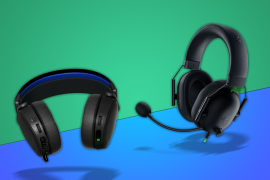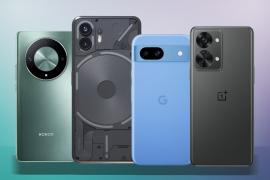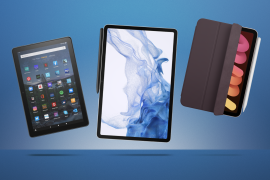There’s no denying the OnePlus Nord 5’s value – but I wish it hadn’t ditched this one key feature
More tempting specs for sensible cash - but it's not all change for the better
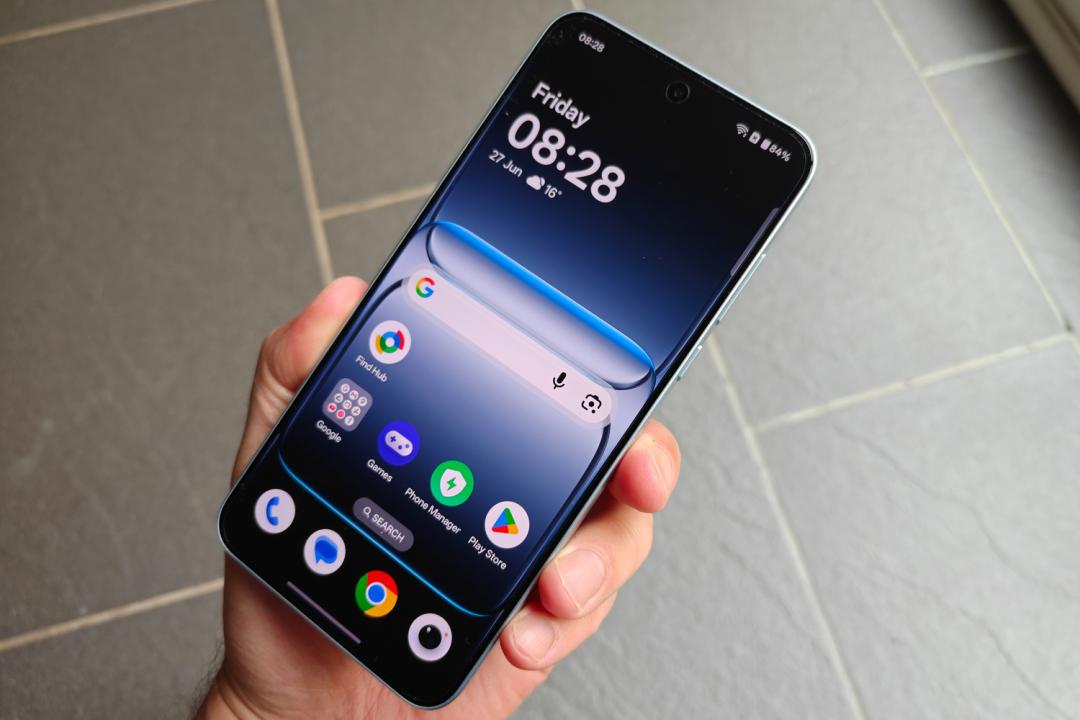
Stuff Verdict
A keenly priced all-rounder that takes great photos and isn’t short on power or battery – but the OnePlus Nord 5 isn’t the design standout its predecessor was, and rivals have it beat in a few areas
Pros
- Ample everyday performance and real-world battery life
- Quality cameras for a budget phone, especially if you’re a selfie addict
- OxygenOS is still a slick, streamlined take on Android
Cons
- Glass/polycarbonate build feels like a step back from Nord 4’s metal
- Beaten on CPU power and battery capacity
- Early days for AI Plus Mind software
Introduction
The Nord series has been diluting down OnePlus’ smartphone best for multiple generations now. Earlier efforts tried to redefine how much tech you could expect from a cheap phone, while the outgoing Nord 4 went against the grain on the design front. When the inevitable Nord 5 teaser campaign kicked off, the big question was which way it would go.
Now we have our answer: the £399/€449 (US launch tbc) Nord 5 undercuts its predecessor, while also bringing a more potent processor, gamer-grade display and slicker selfie shooting. But it also turns its back on an all-metal build, and arguably makes compromises elsewhere on the spec sheet compared to upstart rivals.
The Poco F7 swooped in mere weeks before the Nord’s launch, with a newer, more powerful chipset and an even bigger battery – for less cash. Does the OnePlus make a big enough impression elsewhere to keep it competitive?
How we test smartphones
Every phone reviewed on Stuff is used as our main device throughout the testing process. We use industry standard benchmarks and tests, as well as our own years of experience, to judge general performance, battery life, display, sound and camera image quality. Manufacturers have no visibility on reviews before they appear online, and we never accept payment to feature products.
Find out more about how we test and rate products.
Design & build: face in the crowd
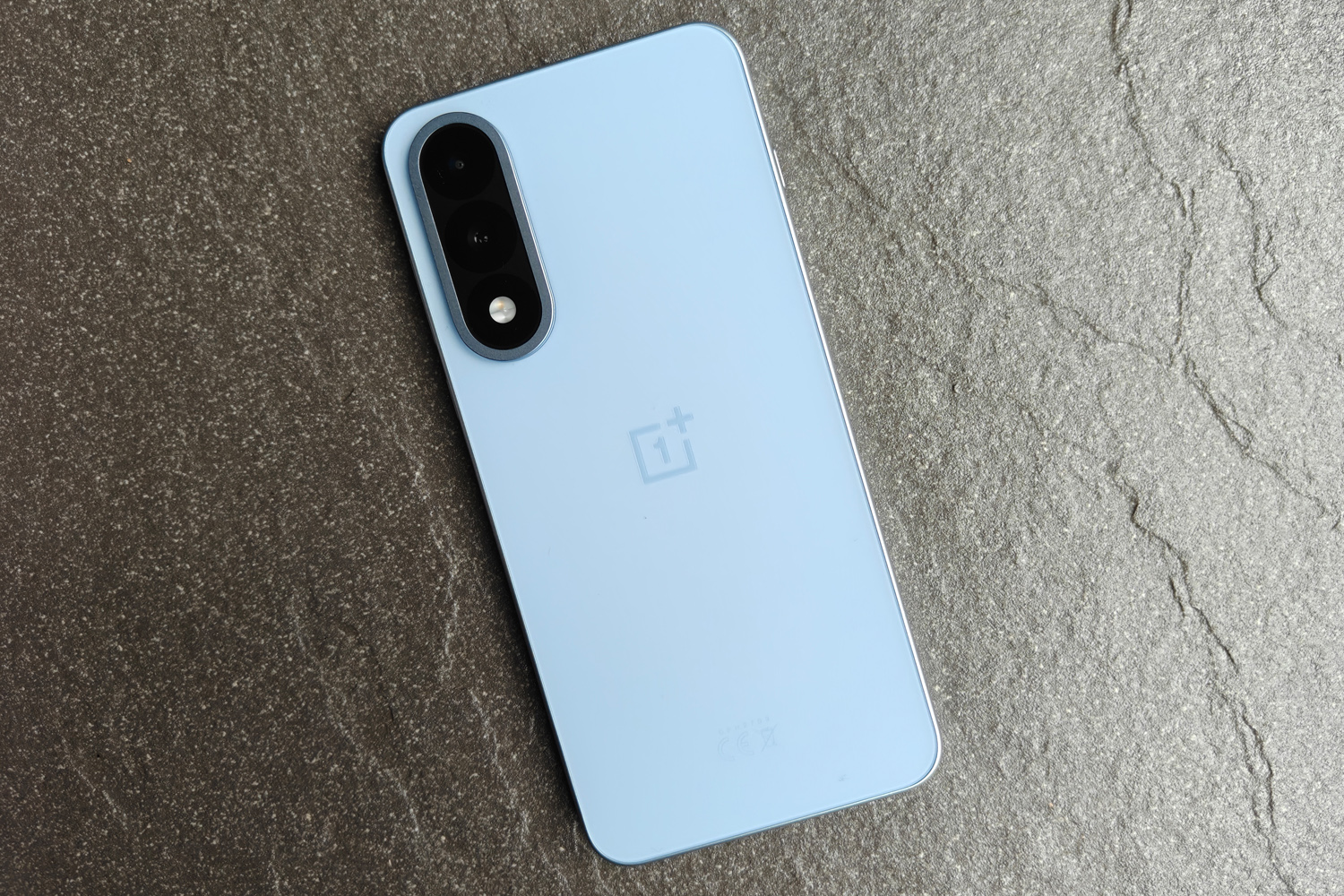
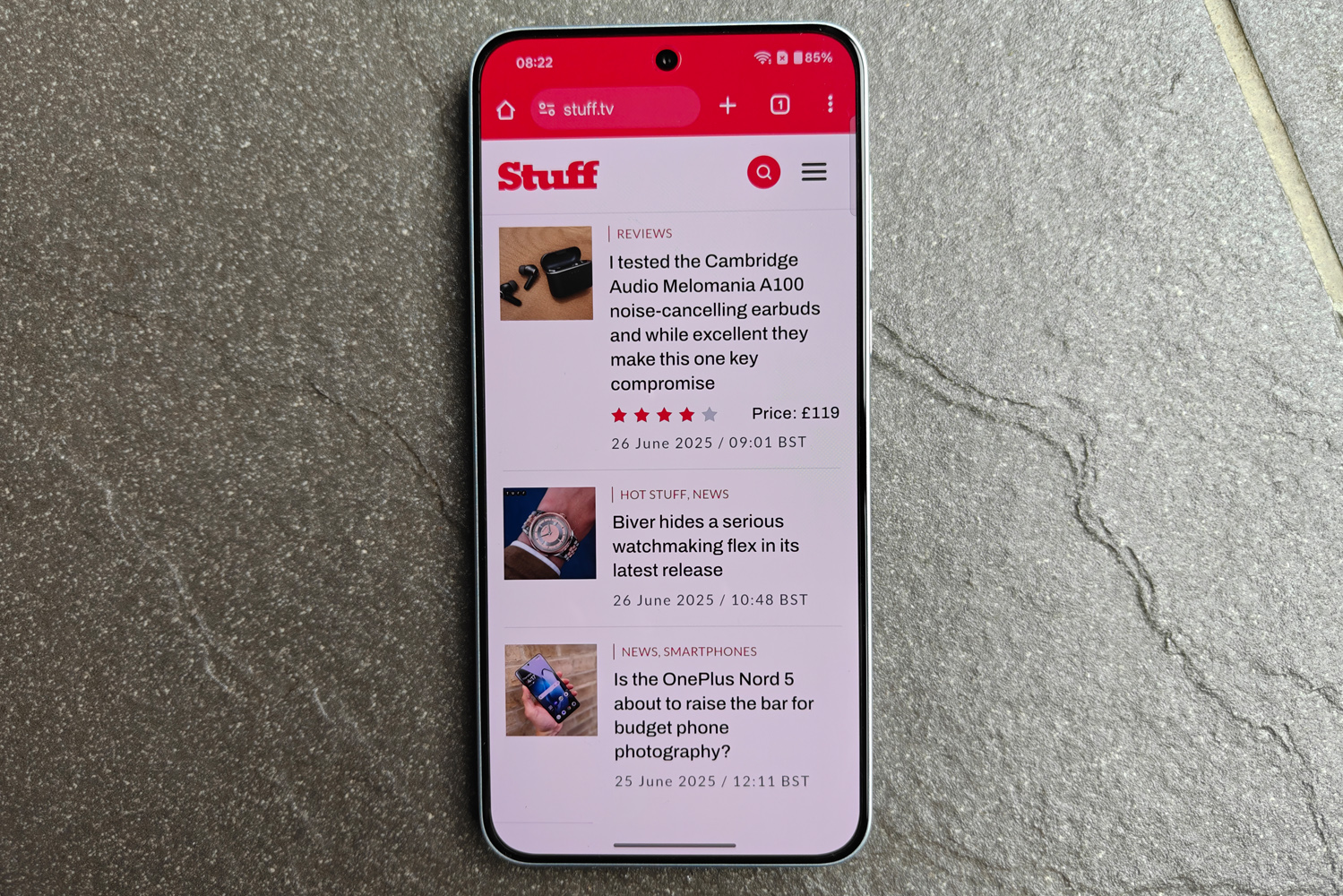
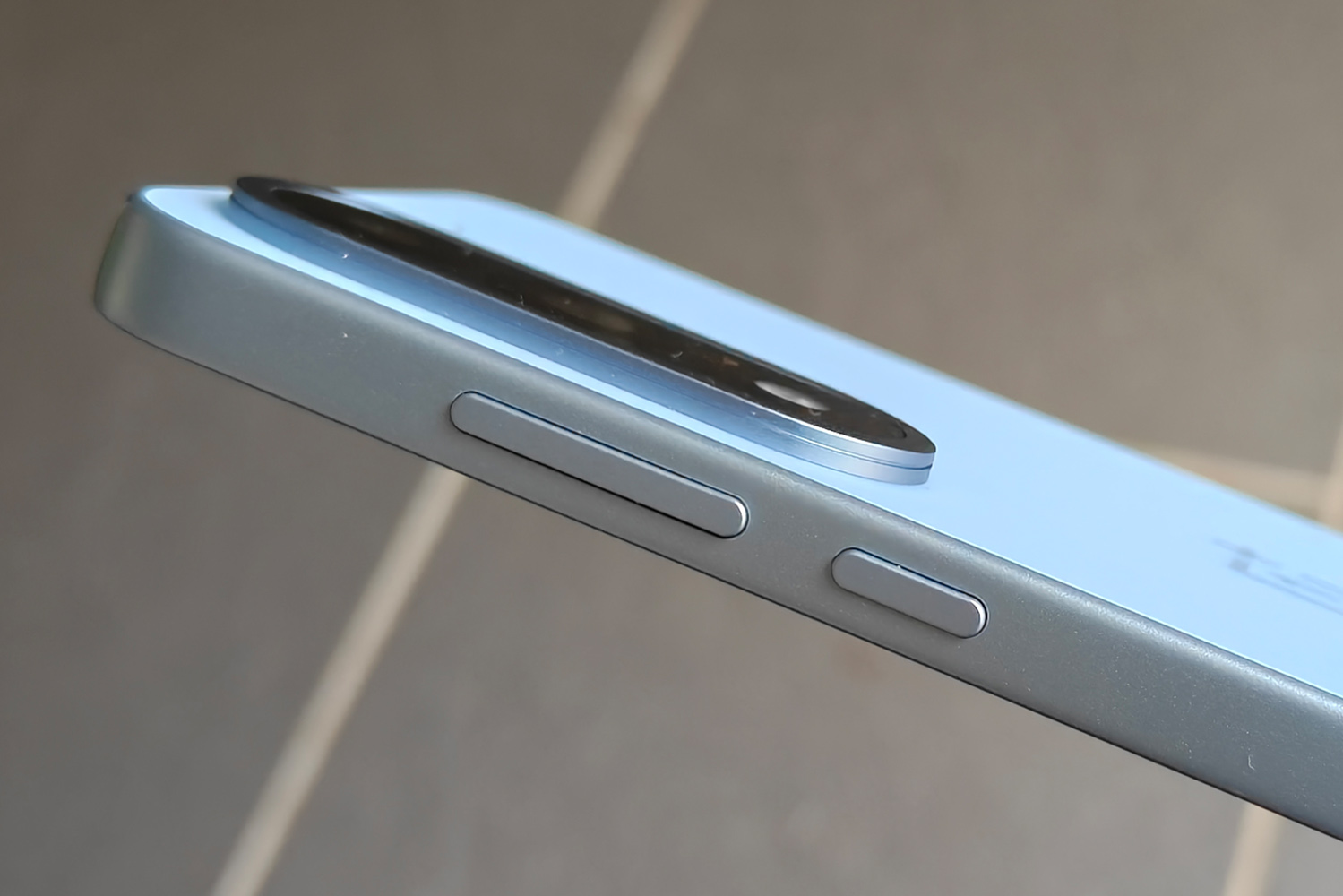
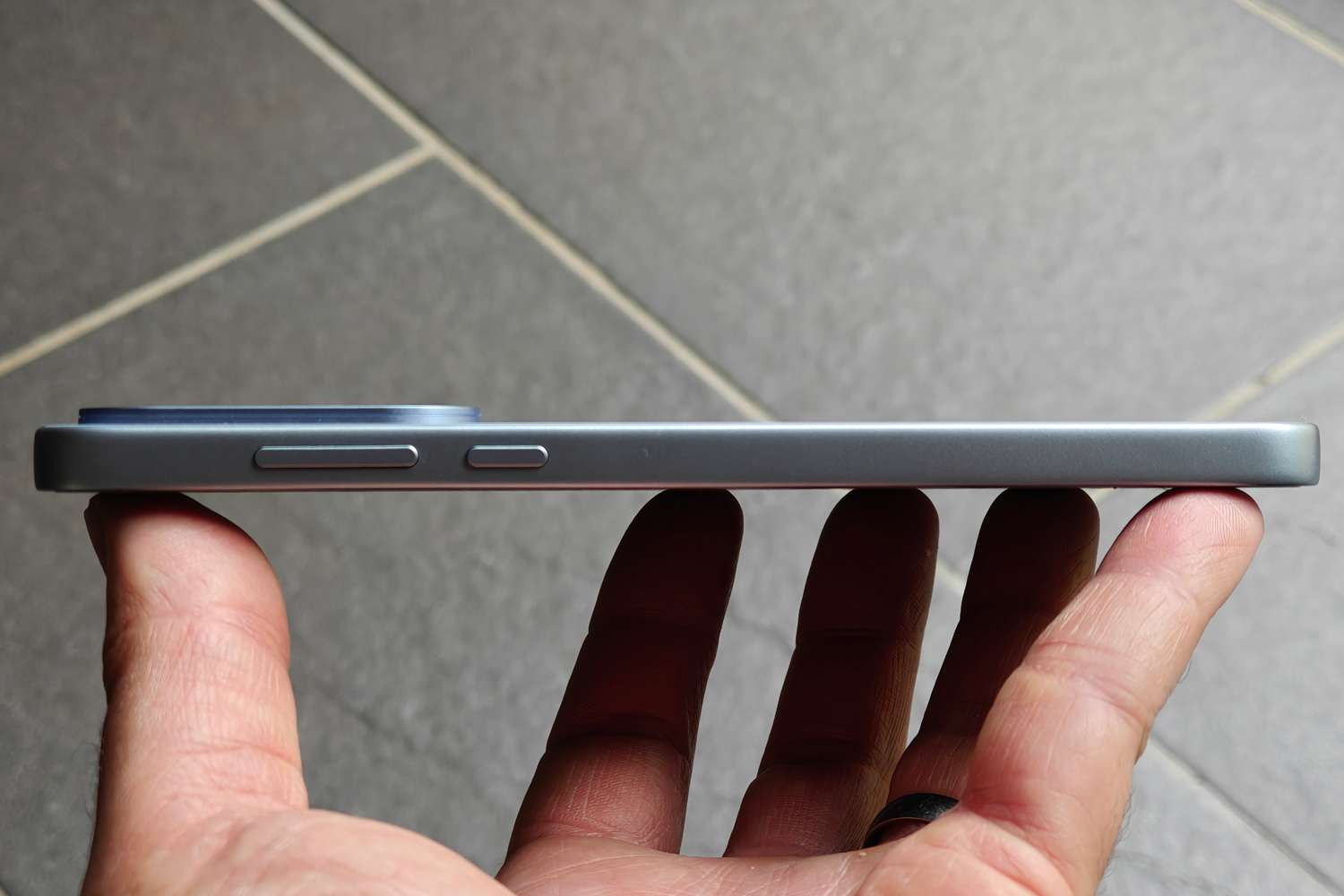
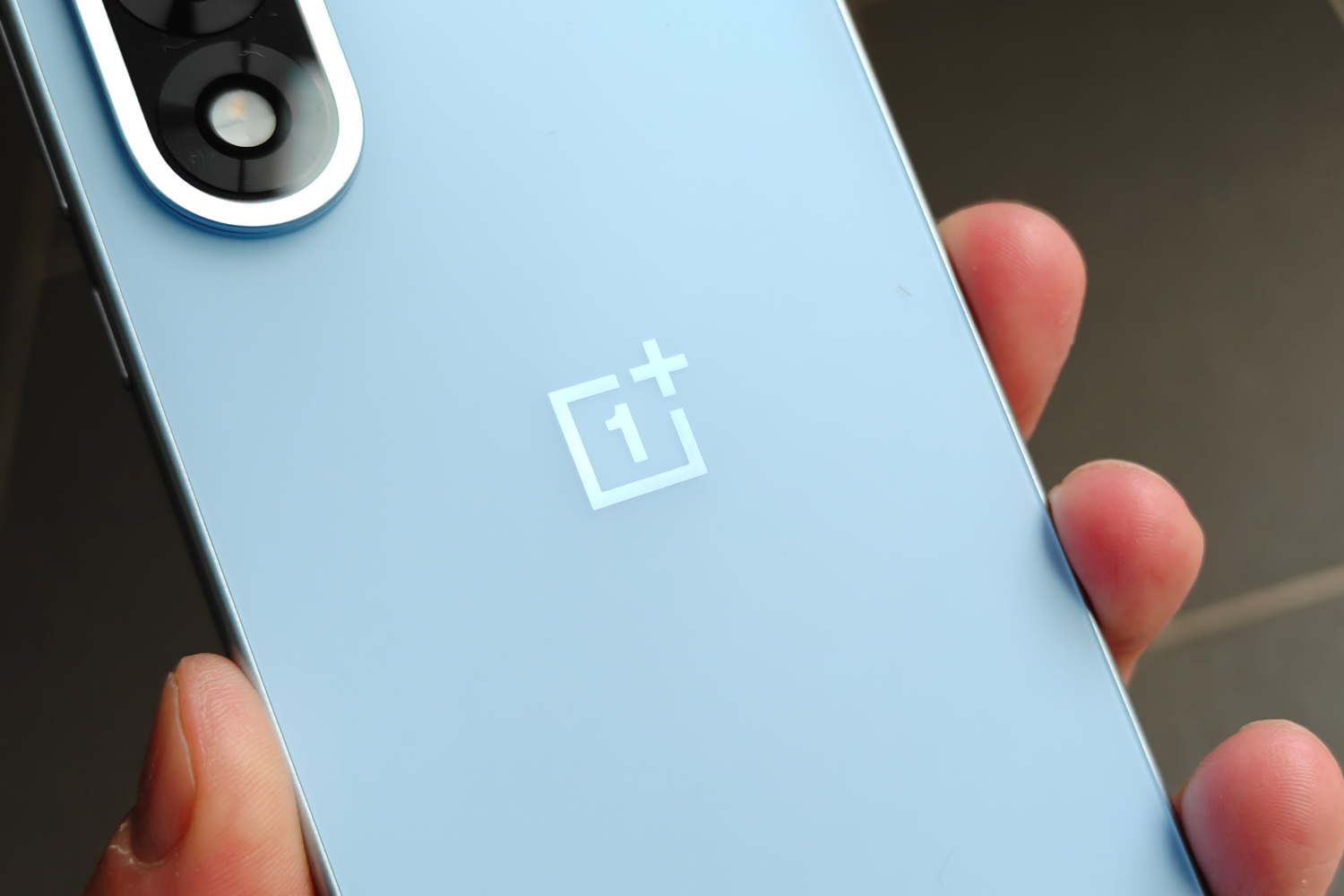
Let’s rip the band-aid off right away. If last year’s metal-sculpted Nord 4 was a deliciously distinctive bit of industrial design, the Nord 5 is altogether more generic – especially in Phantom Grey (ie black). The Dry Ice (blue) I was given for testing has a bit more personality, and the Marble Sand is easily the most visually appealing of the three.
With flattened sides and a new look camera island at the rear, it does feel like OnePlus has taken more than a page from the Apple school of phone design. I also feel the firm has taken a step back on the materials front, using polycarbonate (ie plastic) for the frame and Gorilla Glass 7i for the rear panel. The Nord 4’s textured unibody just feels more high-end in comparsion.
That’s not to say the Nord 5 feels cheap, mind. This phone has some real heft, weighing in at 211g, and the frosted finish means it’s not nearly as slippy as some glass-backed phones can be. An IP65 rating promises a decent amount of protection from the elements, too – although not as much as the cheaper Poco F7.
The Nord 5 is the first OnePlus phone to leave China or India with the firm’s new Plus key, which replaces the signature alert slider at the top left side. It’s got a similar set of skills to Apple’s Action button, letting you change volume modes, activate do not disturb, open the camera app (and act as a shutter button while you’re there), turn on the flashlight, record a voice note, take a screenshot, or open the translate app.
Although the software update had yet to land in time for me to test it, a shortcut to OnePlus’ AI Mind Space is also on the way. It’s not the first note-taking, screenshot searching journal app I’ve seen, so it’ll be interesting to see whether it does anything different.
I can’t fault the under-display fingerprint sensor, which is as quick and accurate as any capacitive sensor you’ll find on a budget phone. There’s face unlocking as well, but it isn’t secure enough for banking apps. That’s the case for pretty much everything under £500, though, so the Nord 5 doesn’t lose any points here.
Screen & sound: the big picture
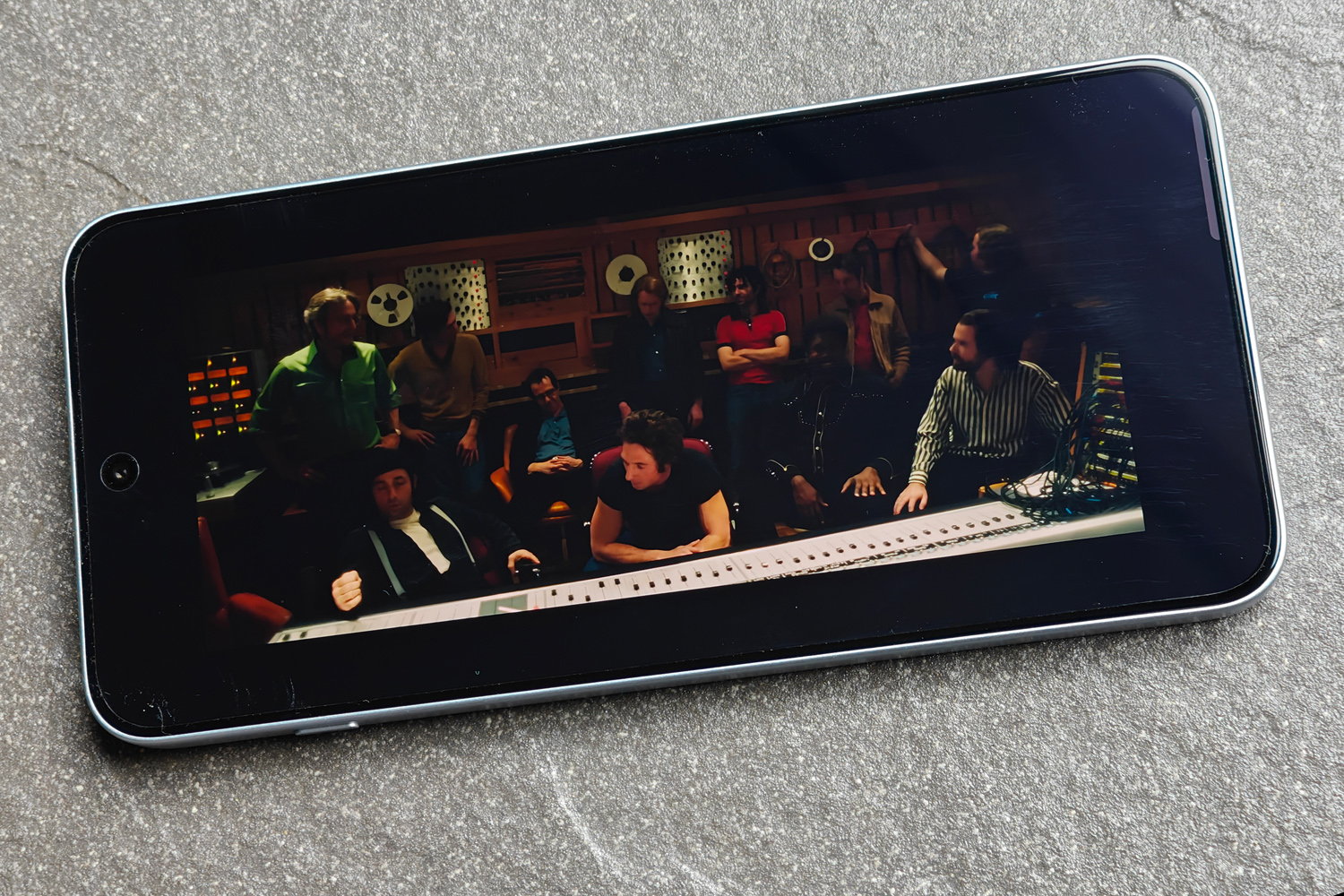
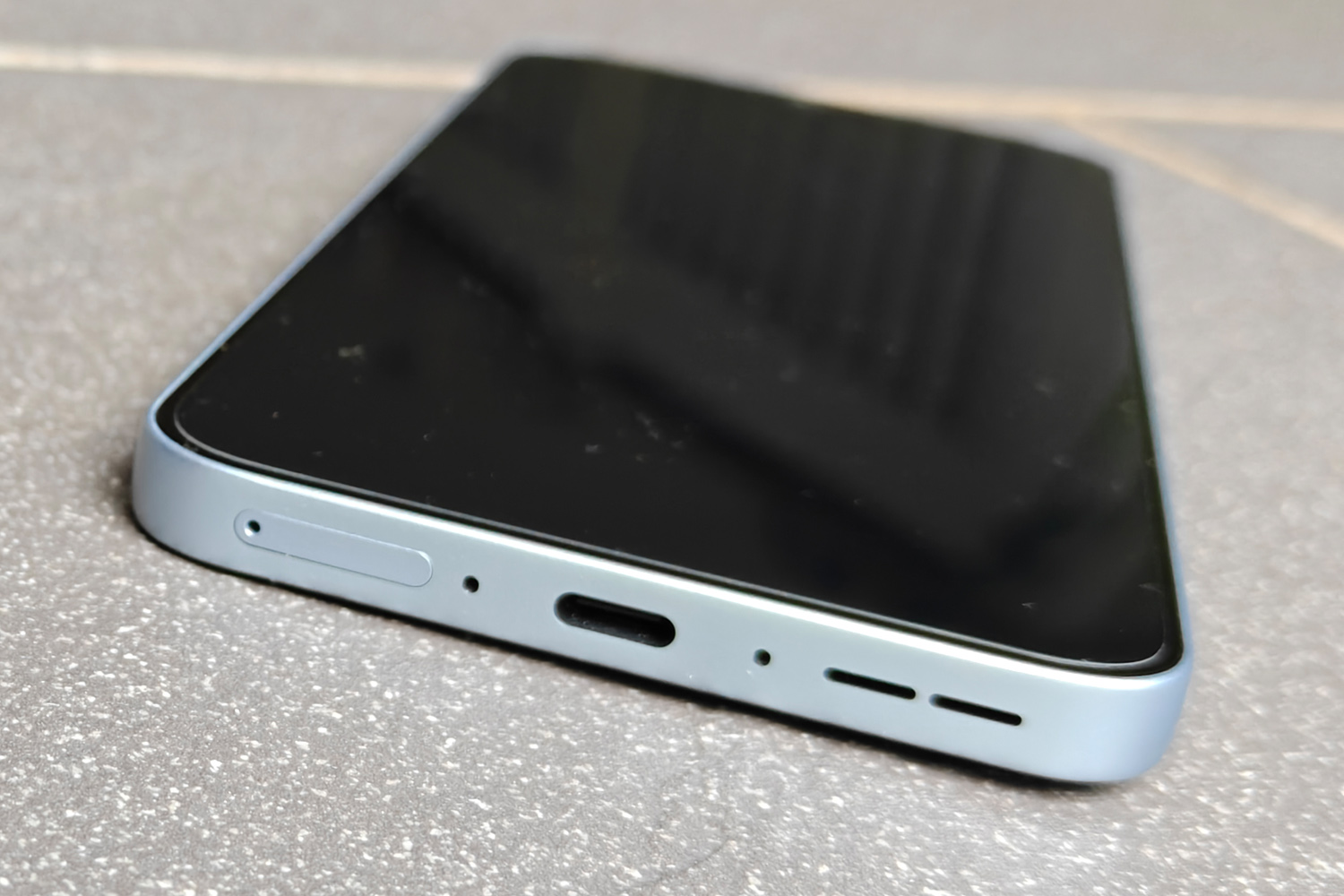
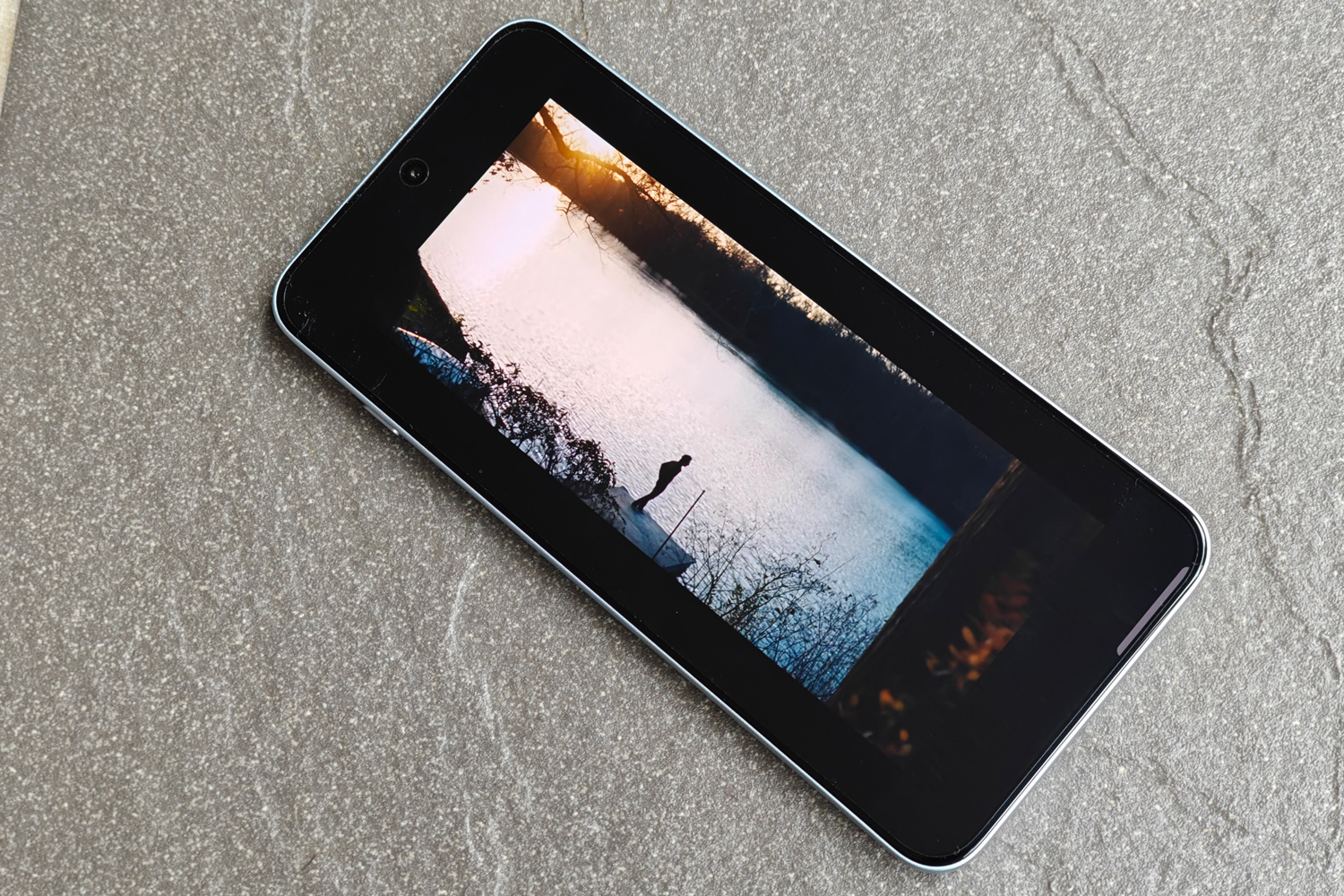
Just like the rest of the Android world, OnePlus has continued to embiggen its phones. The Nord 5 arrives with a whopping 6.83in display, which makes it a proper hand-filler. The 2800×1272 resolution packs in enough detail to keep text looking crisp and images clear, and the symmetrical bezels are satisfyingly slim for a budget handset.
Naturally OnePlus has gone with an OLED panel – even affordable phones can’t get away with LCD these days – so you’re getting wonderfully deep blacks, impeccable contrast, top-notch viewing angles and delightfully vibrant colours. Tone and colour balance are well-judged at the stock settings, so I didn’t feel the need to tweak them, but there are a bunch of other modes if you want more natural, softer hues.
A peak 1800 nits isn’t the highest I’ve seen from a phone in this price range, but that’s not to say the Nord 5 is at all dim. It shines well enough outdoors I didn’t struggle with visibility. It plays nicely with Google’s Ultra HDR standard, so photos have properly punchy highlights.
A 144Hz refresh rate marks this out as a gamer-grade phone. For the most part it’ll only clock up to 120Hz when scrolling or showing motion, but compatible games can go even higher for smoother play. The auto-select setting is the next best thing to LTPO tech for battery saving, sticking to 60Hz for static content.
The stereo speaker setup – a down-firing main driver and earpiece tweeter – are a fitting match to the screen, with ample volume and a decent enough balance. Bass is pretty anaemic, but that’s true of most mid-rangers and below. Podcasts and YouTube clips sound just fine.
Cameras: selfie conscious
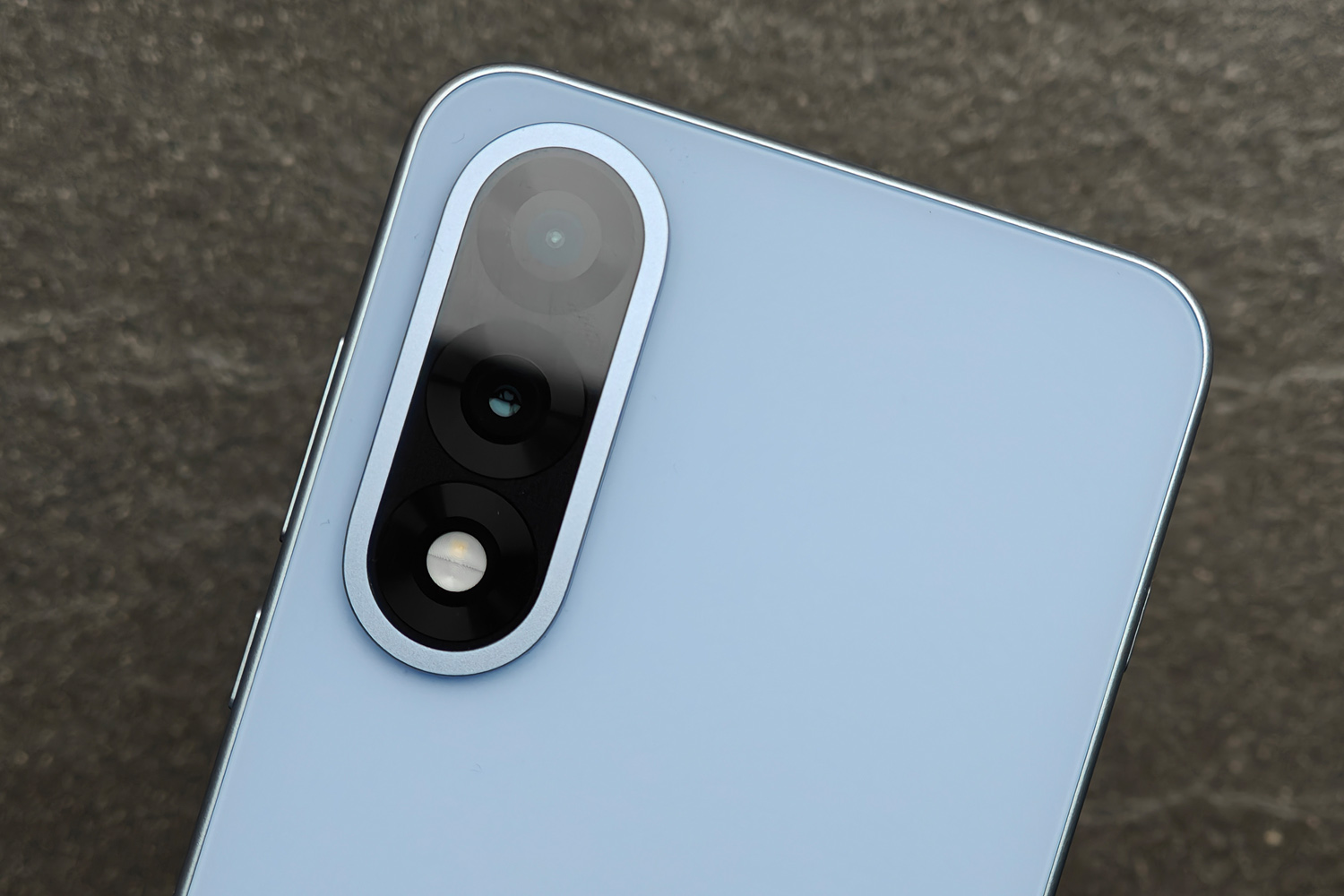
The Nord 5 has really stepped up its selfie game, with a 50MP front snapper equipped with mechanical autofocus to ensure you’re always looking sharp. The Samsung JN5 sensor is physically lager than the sort you’d usually find in a budget phone, which will make all the difference in low light.






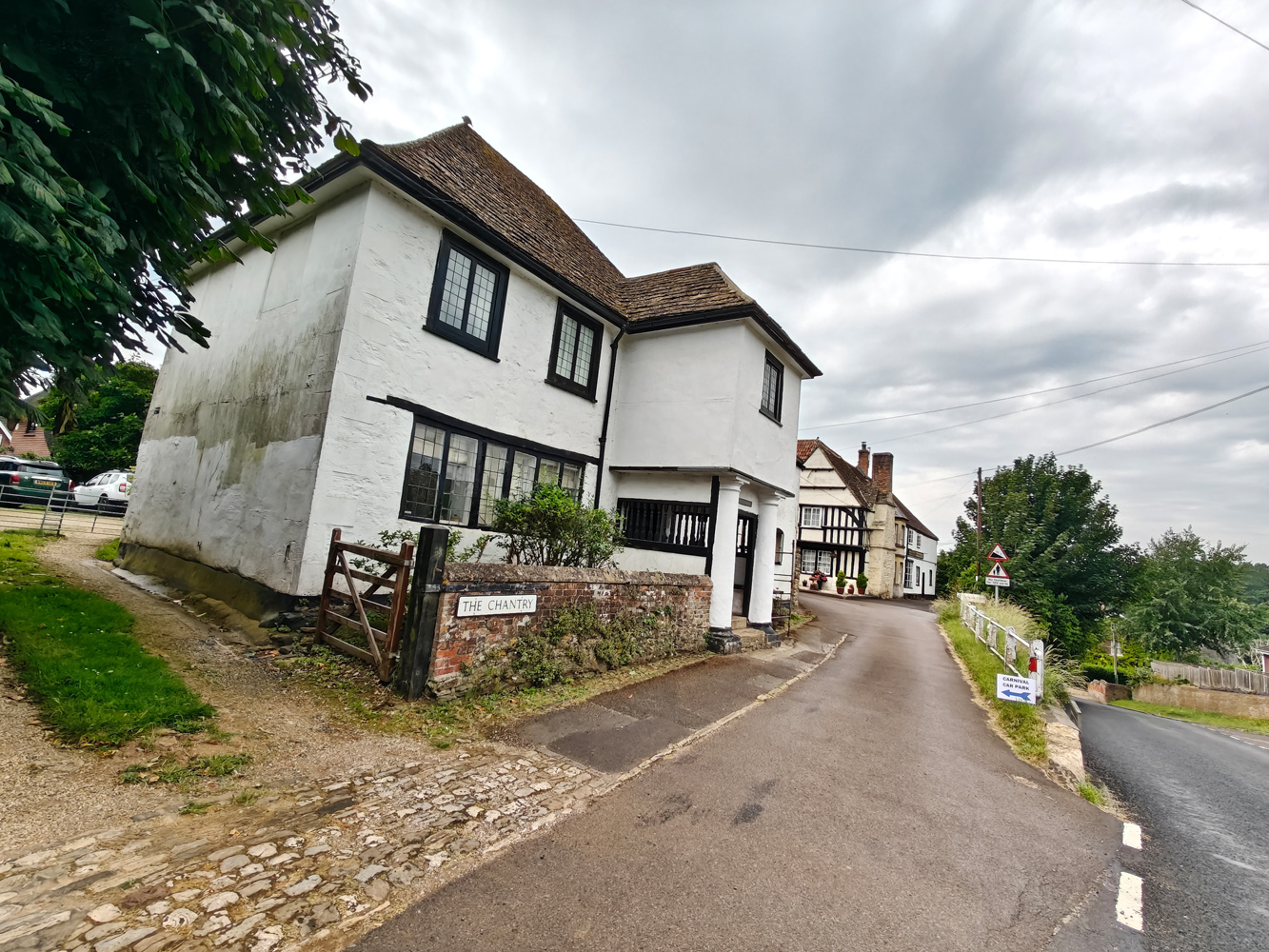


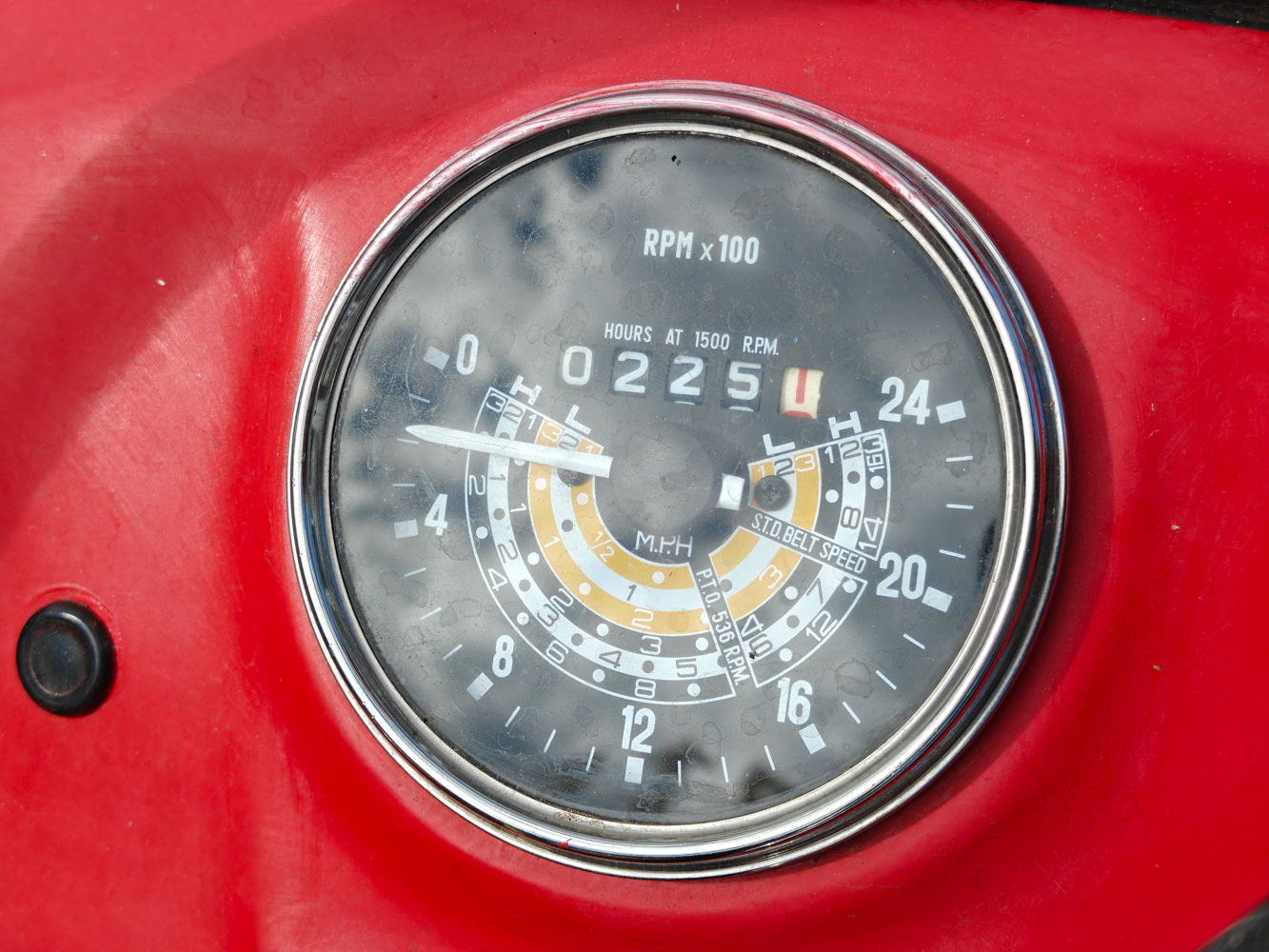





There’s a 50MP Sony-supplied main camera around back, with optical image stabilisation and a fairly wide f/1.88 aperture. If you want zoom, it’ll be through cropping and digitally enhancing the image. It’s paired with an 8MP ultrawide, which is the clearest indicator of this phone’s budget leanings.
It’s the weakest of the bunch as a result, lacking the sort of fine detail present in pics taken with the lead lens. Dynamic range isn’t as strong either, but colours are pretty consistent and the extreme edges of the frame don’t show much distortion. The 50MP main unit is sharper, with better defined edges and more controlled dynamic range. I did notice some blooming on harshly-lit subjects, but only in especially bright scenes. Colours are natural for the most part, with stronger contrast than say, Samsung. A Pixel 9a is more nuanced, though you pay more for the privilege.
There’s some natural bokeh blur to be found around close-ups, which is handy as the portrait mode isn’t very skilled out detecting loose hairs, resulting in an unnatural looking depth effect. An auto macro mode kicks in when you get extremely close, using the ultrawide when there’s enough light.






Low-light performance is really rather good for the money, with only the darkest of night scenes struggling to contain noise and evidence of image sharpening. The ultrawide falls off faster, and can struggle to lock focus on more distant subjects, while the selfie camera still delivers the goods. It’s a very capable camera, taking backlit subjects and direct sunlight in its stride. There’s a strong case for buying the Nord 5 if you use the front camera more than the rear ones.
Software experience: breath of fresh air
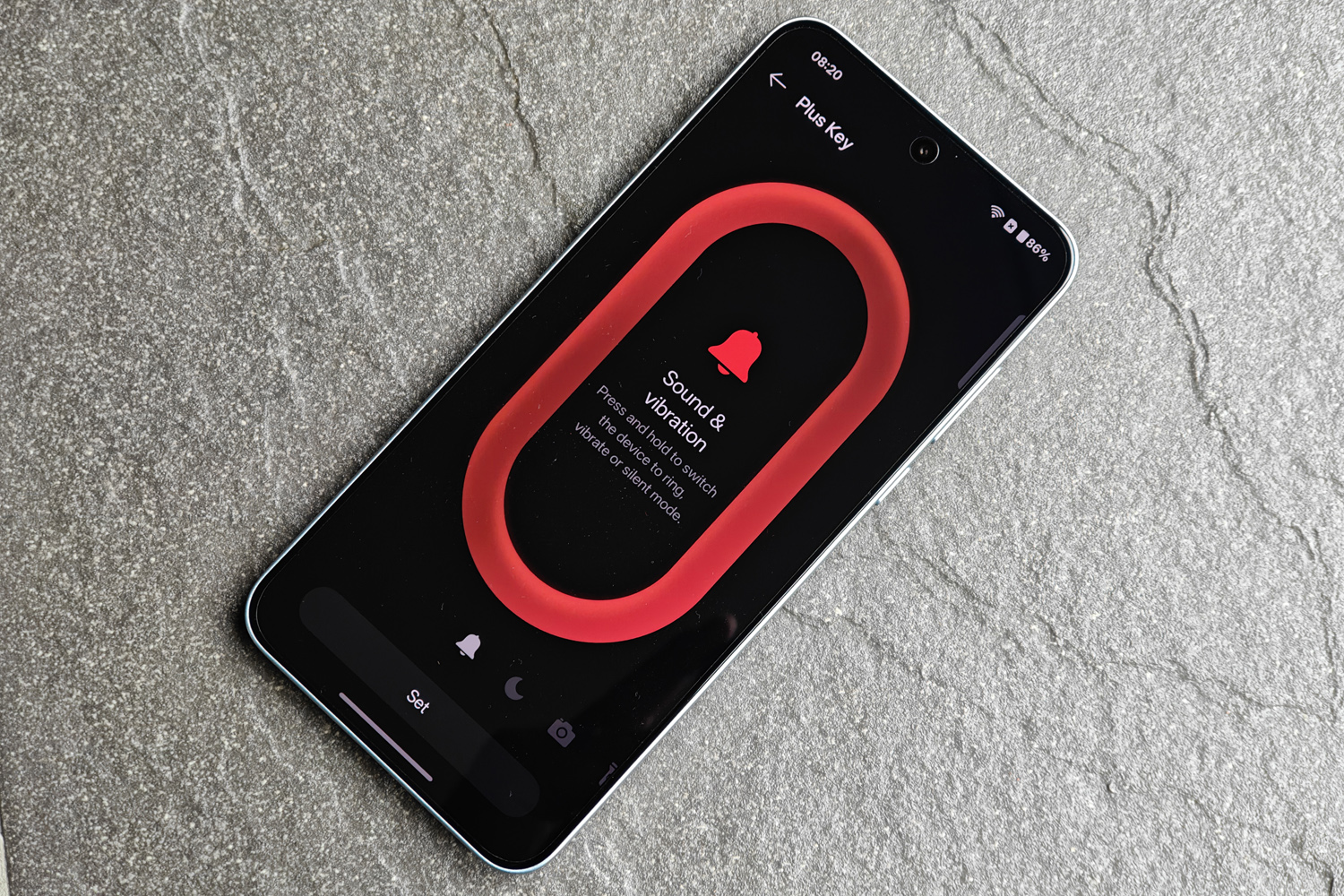
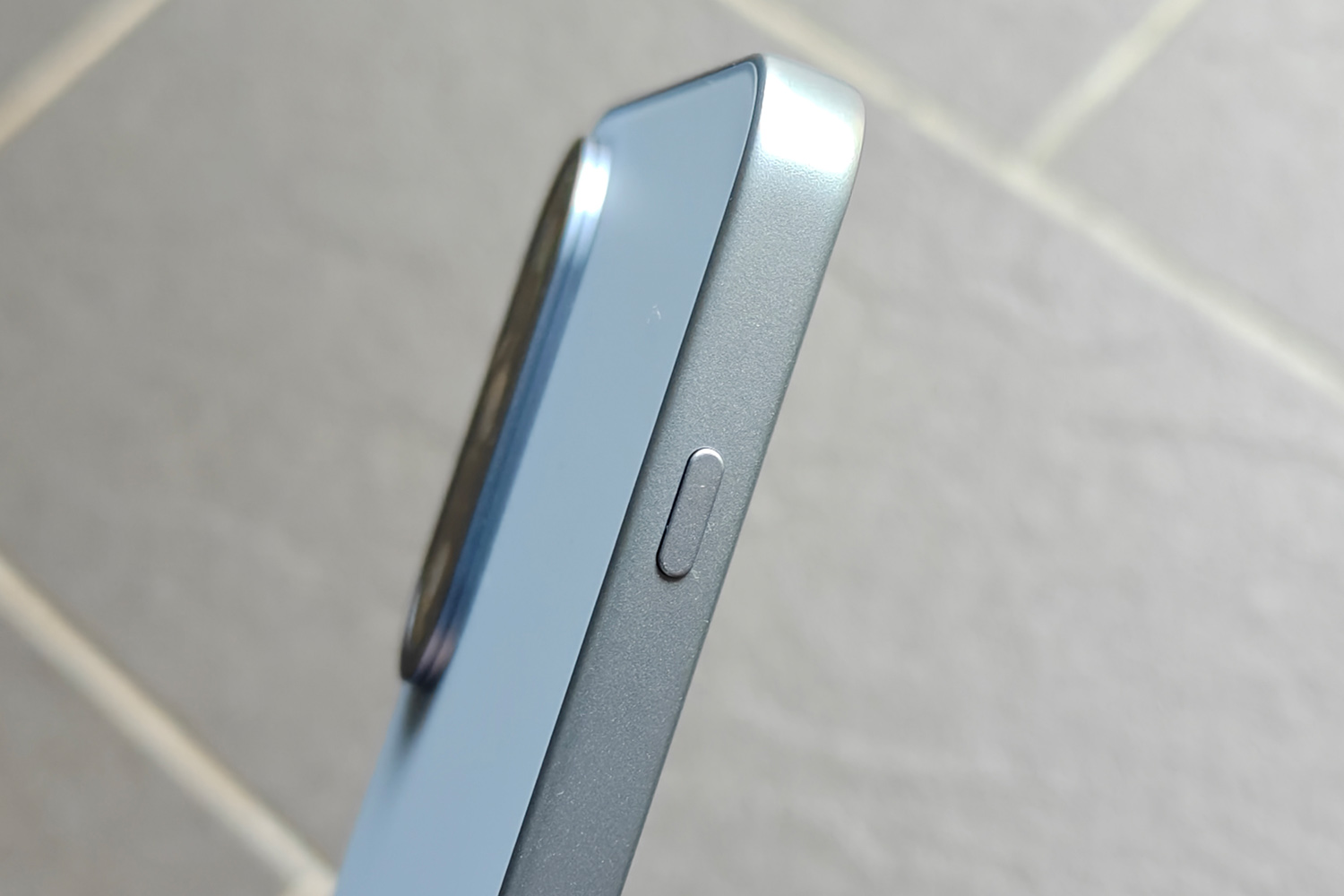
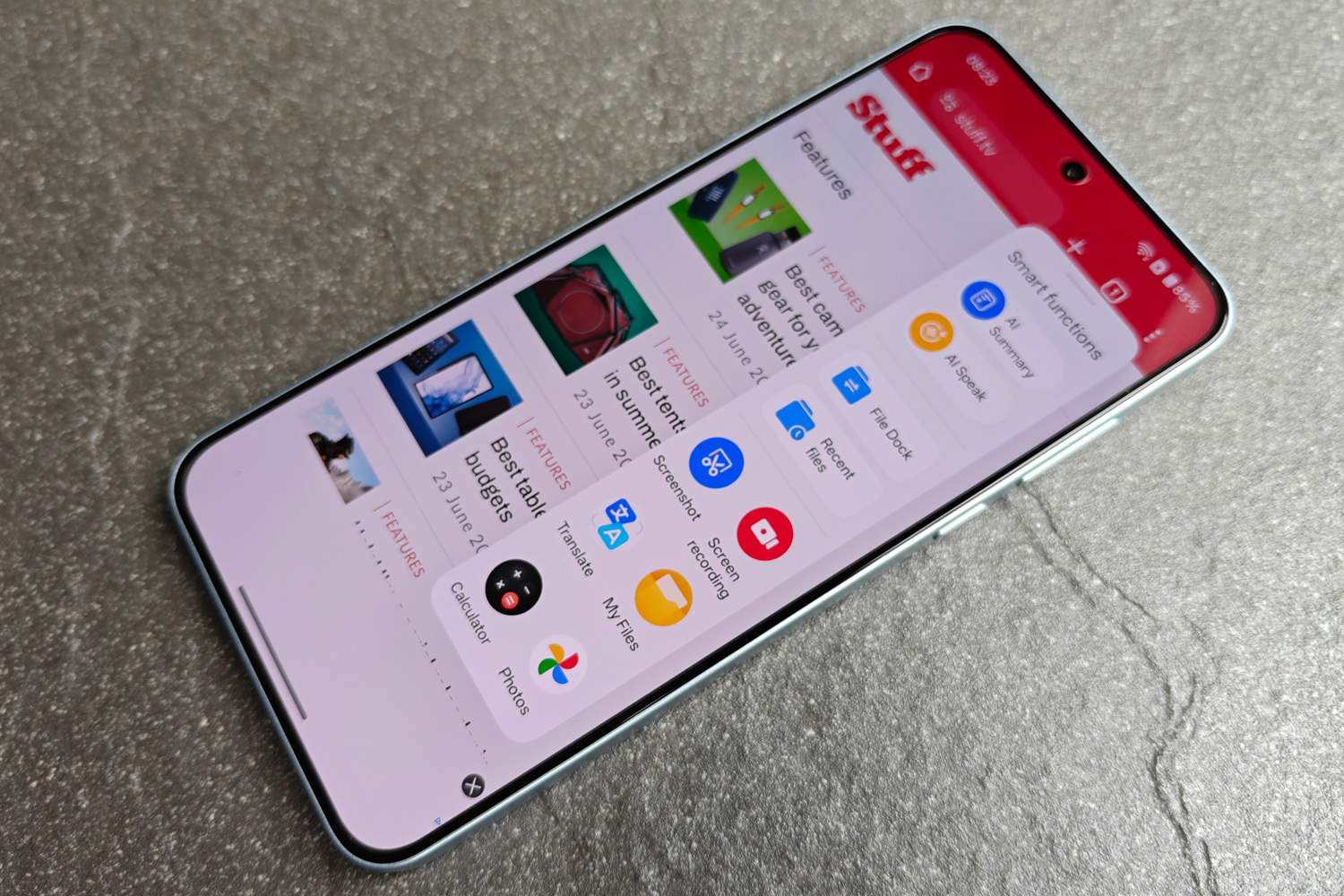
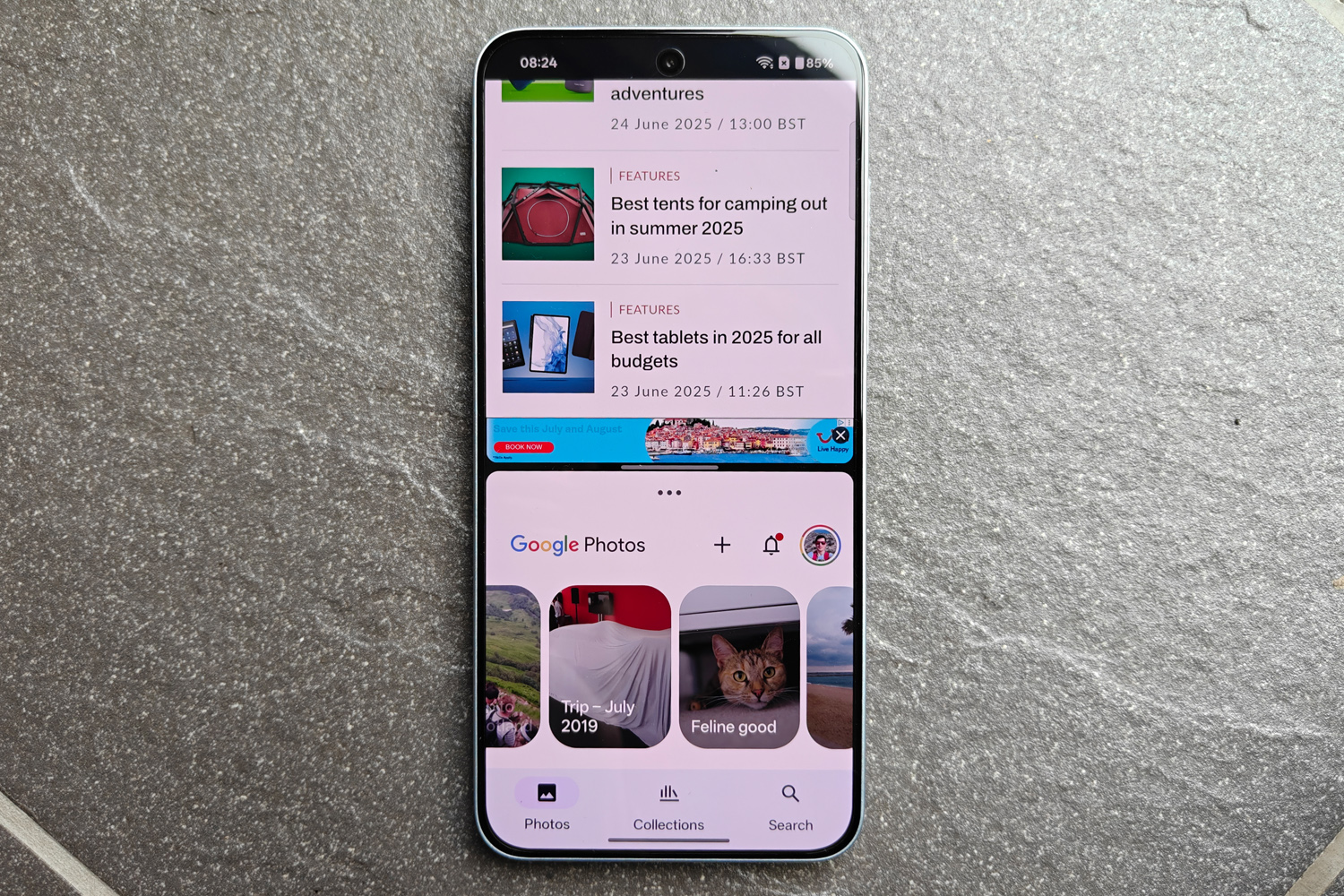
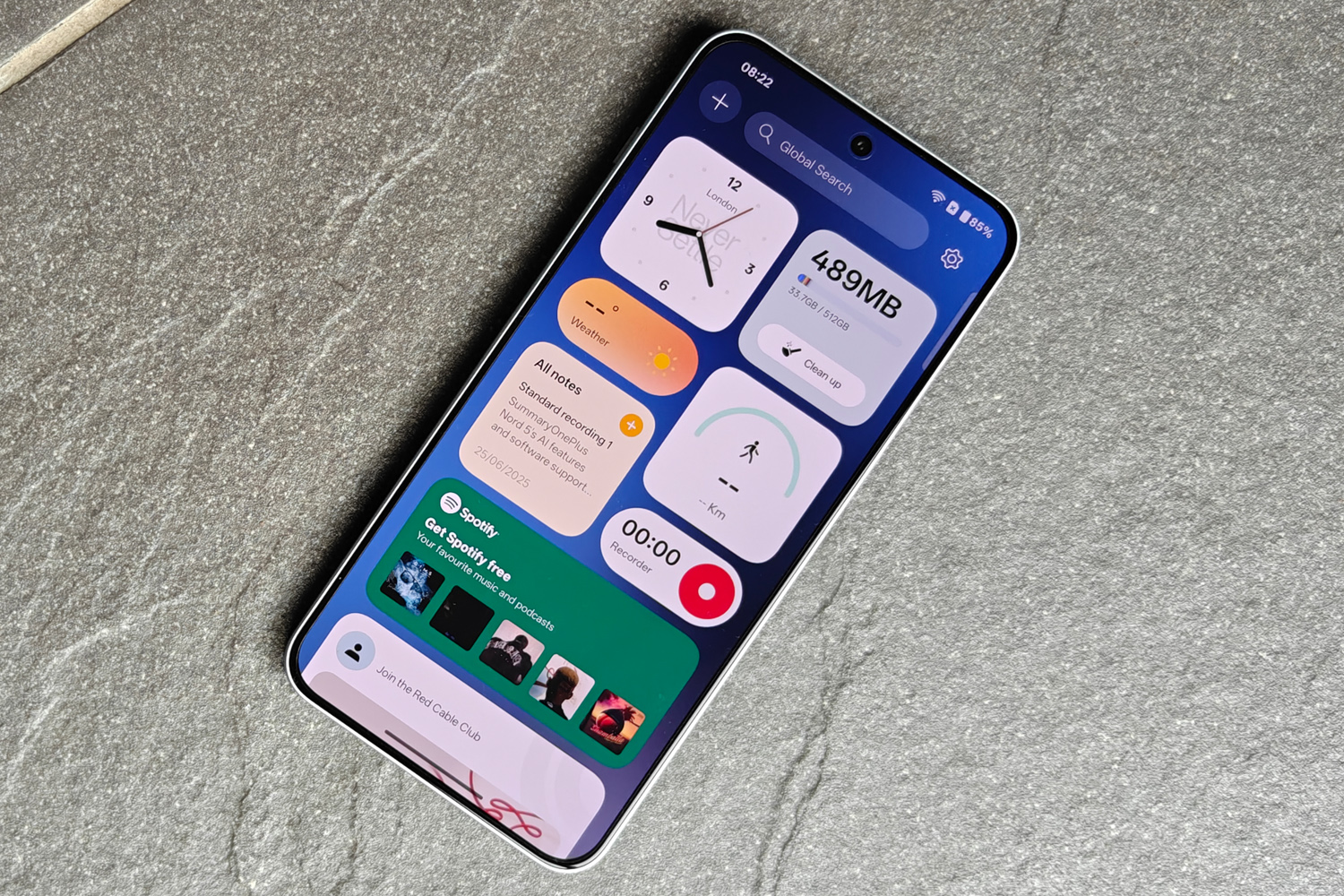
OnePlus hasn’t diluted Oxygen OS – the firm’s bespoke take on Android 15 – down for its affordable phones. The Nord 5 gets the same extensive set of software features as the OnePlus 13, including a phone-friendly version of Open Canvas.
This is still my favourite way of multitasking on big-screen Android devices, and it’s almost as slick at 6.83in. Being able to save app pairs for opening quickly later is genuinely useful for those sorts of task that can’t be done in a single window. I also found the floating toolbar, accessed with a swipe from the side of the screen, more useful here than I did on the OnePlus Pad 3; with no app launcher, it’s great for jumping between apps without a trip to the home screen first.
The UI doesn’t stray too far from Google’s default layout, unless you want it to. The quick settings and notifications menus can be combined into a single screen, and I’m a fan of the shelf that appears with a downward swipe on the homescreen. You can stuff it full of widgets and keep the homescreen itself clear.
Like most budget phones, there’s a handful of third-party widgets waiting for you in the app drawer when you first power the Nord 5 up. I’d call them bloat, but others might feel differently about AliExpress and booking dot com. OnePlus also includes its own web browser, image gallery, notes app and file manager. You can use Google’s defaults instead if you prefer, but many are stuffed with AI additions that could make them worth a look.
The voice recorder can generate transcriptions and summaries from your audio clips. The notes app gets its own assistant that can tighten up your text, reformat it in a different tone, and expand short sentences into longer paragraphs. The photo gallery can erase background distractions, remove reflections, and generationally recompose tightly cropped shots. If those sound familiar, it’s because you’ll find them on most modern phones – and they perform about as well as I’ve seen elsewhere, too.
OnePlus’ long-term software commitments don’t change if you buy budget instead of premium; you’re getting the same four years of new Android generations and six years of security patches here that you’d get on a OnePlus 13. That’s very respectable, given most affordable phones still top out at three years, but it’s still worth remembering Google has pledged seven years for the (slightly more expensive) Pixel 9a, should you want to hold onto your handset for longer.
Performance & battery life: stays in its lane
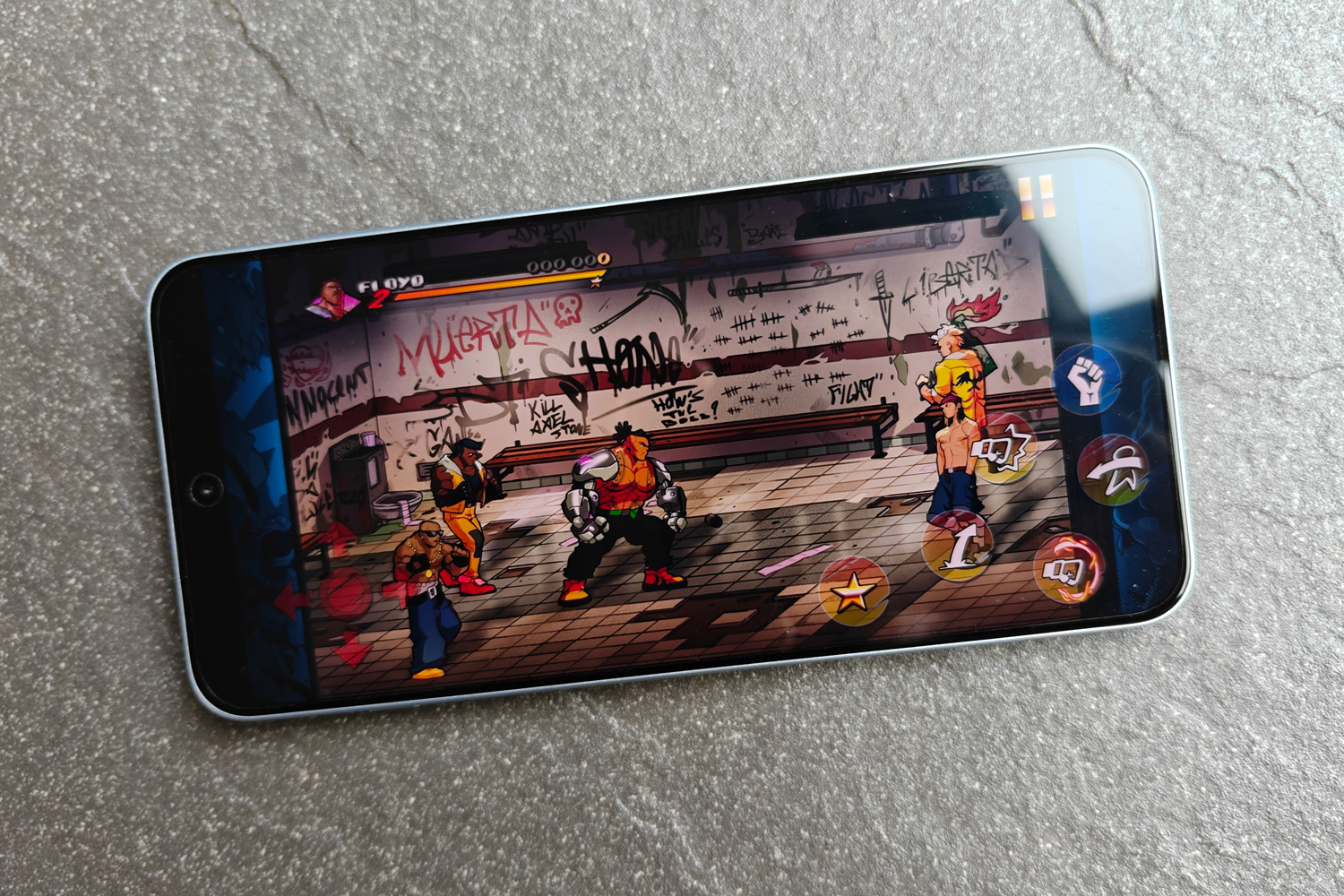
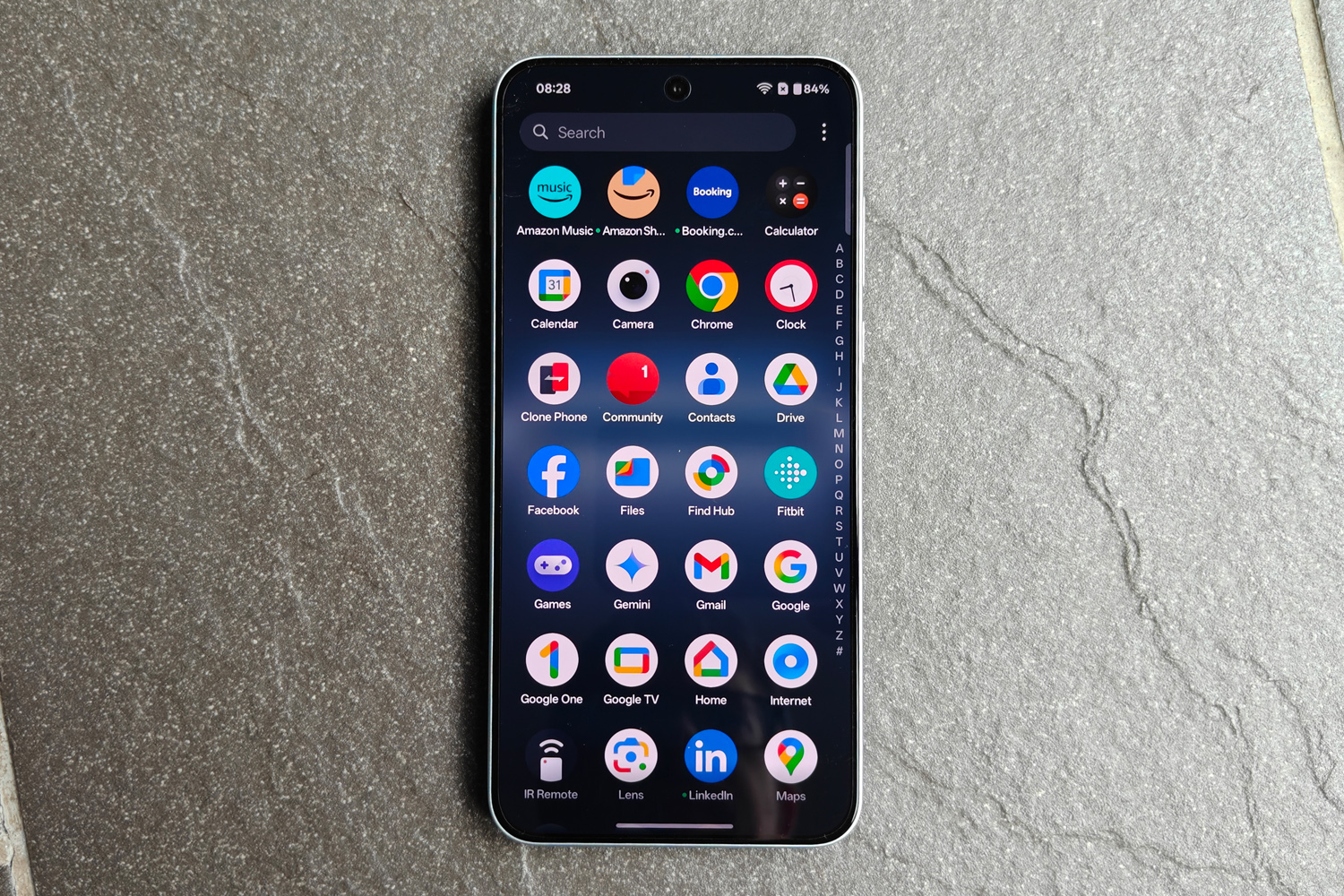
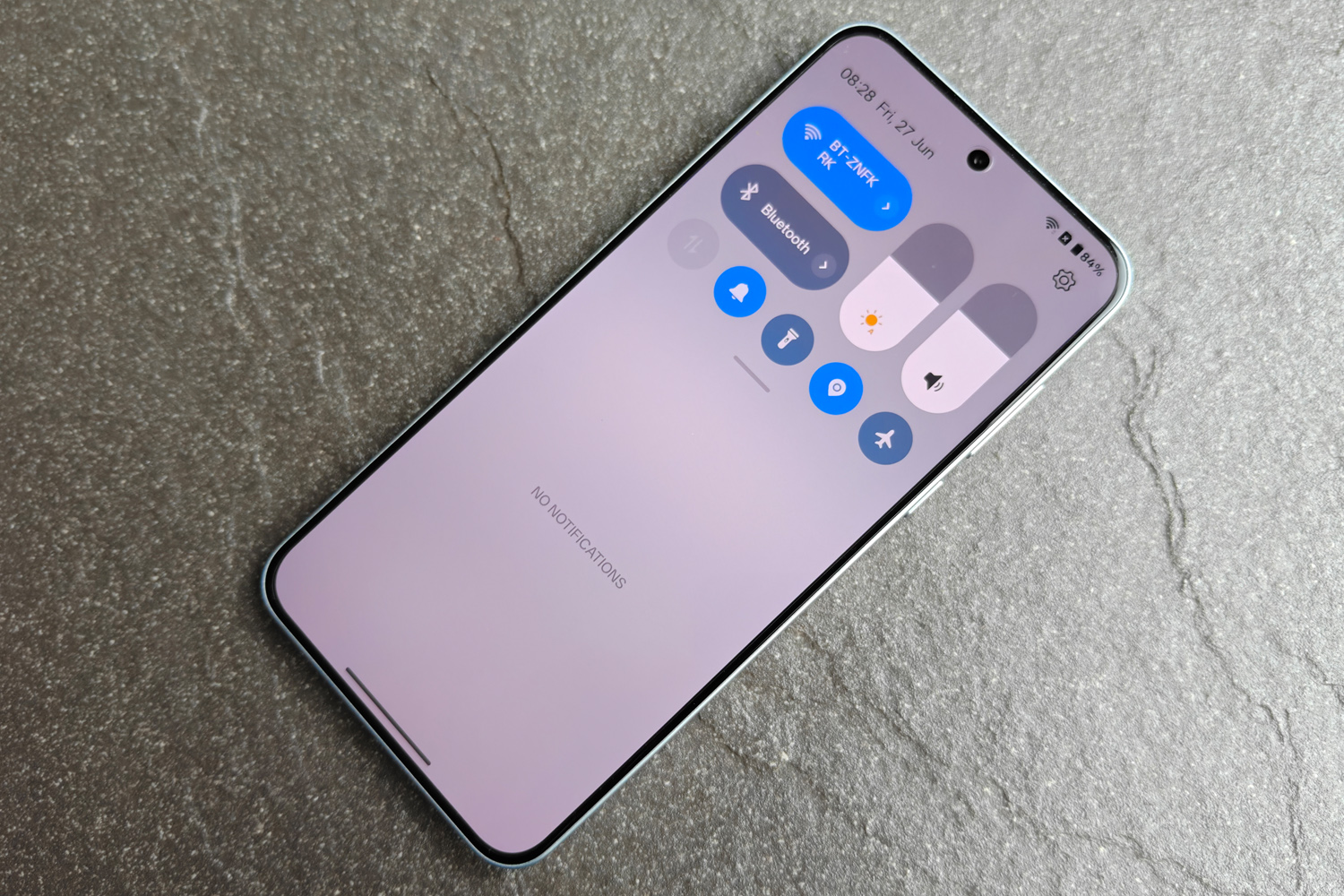
This might be the first time OnePlus has used an 8-series Snapdragon chipset in a Nord phone, but it’s not the 8 Elite you’ll find in today’s flagship phones. Nor is it the newer Snapdragon 8s Gen 4 used in the Poco F7. Here you’re getting the older 8s Gen 3, which admittedly is still aimed at a price point higher than what OnePlus is asking for the Nord 5.
Paired with either 8 or 12GB of RAM (my review unit had the latter) and up to 256GB of on-board storage, this is still a potent phone – as the benchmarks below show. However, I can’t overlook the performance gap to the 8s Gen 4, which is anything from 5-20% depending on the test. Single-core differences aren’t huge, but multi-core and gaming show the newer chip taking the lead. If you want maximum raw performance for your cash, it’s something to consider.
| OnePlus Nord 5 benchmark scores | |
| Geekbench 6 single-core | 1947 |
| Geekbench 6 multi-core | 4890 |
| Geekbench AI | 2953 |
| PCMark Work 3.0 | 18578 |
| 3DMark Wild Life Extreme | 3235 |
| 3DMark Solar Bay | 5416 |
That said, I found the Nord 5 perfectly responsive in daily use, with fast app loads, no sluggishness when multitasking, and animations that were as smooth as you like. There’s still enough oomph for 3D games to make use of the 144Hz refresh rate, with Genshin Impact and Call of Duty Mobile both proving perfectly playable. A large vapour chamber helps keep thermal throttling in check, too.
Used as a daily driver, the Nord 5 also lasts longer than its 5200mAh battery would suggest. Sure, you can now get phones with considerably more cells, but I was seeing a day and a half between charges for the most part. Only a full day spent on 5G, with lots of GPS navigation and use of the cameras, necessitated a charge before bedtime.
While you don’t get a charger in the box, the Nord 5 plays nicely with OnePlus’ 80W SuperVOOC power bricks. Half an hour over USB-C is enough for 65%, while a full charge took just over 45mins. I like that OnePlus has added bypass charging, too; it means I could game while plugged in without introducing extra heat, or having any negative impact on long-term battery health.
OnePlus Nord 5 verdict
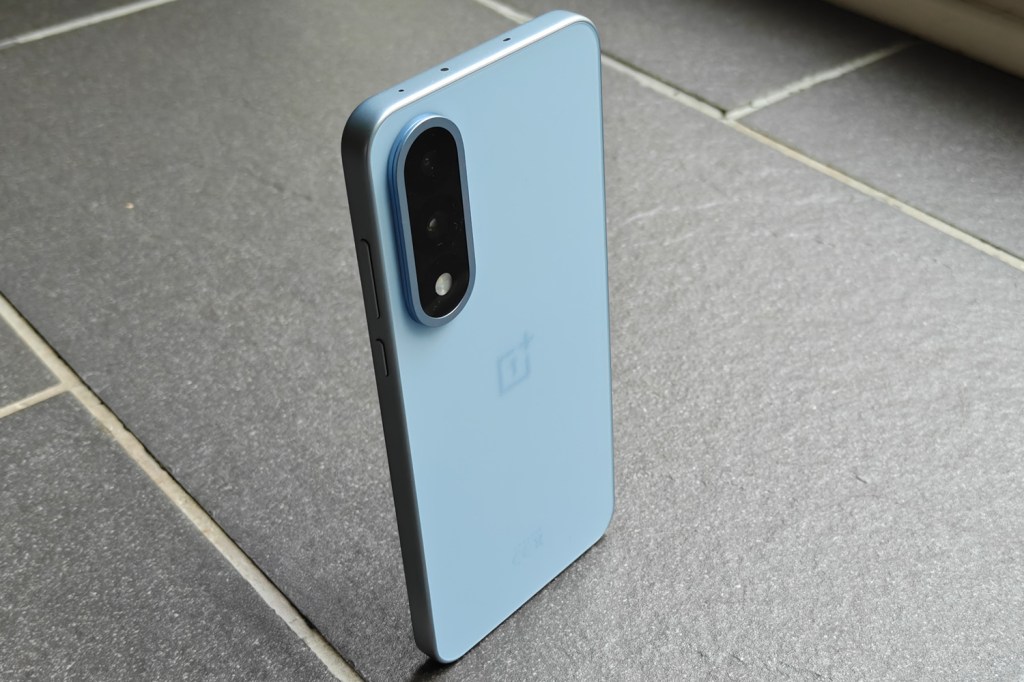
In isolation, the OnePlus Nord 5 is a compelling cut-price handset. You’re getting a bright, colourful display, very capable front and rear cameras, and a smooth-running version of Android that doesn’t overload you with bloat in the way many cheap smartphones do. A handful of play-friendly specs add extra gamer appeal, and it’s great to see the customisable Plus key not being reserved for the firm’s top-tier models.
The move away from metal makes this much less of a design stand-out than its predecessor, though. Combined with the redesigned rear camera island, the Nord 5 really looks quite generic. You could argue the same about the Poco F7, but that has a much bigger battery, newer generation chipset, and better water resistance – for less money. If phone photography isn’t your top priority, it’s the obvious choice.
Stuff Says…
A keenly priced all-rounder that takes great photos and isn’t short on performance or battery life – but the OnePlus Nord 5 isn’t the design standout its predecessor was, and rivals are arguably more compelling.
Pros
Ample everyday performance and real-world battery life
Quality cameras for a budget phone, especially if you’re a selfie addict
OxygenOS is still a slick, streamlined take on Android
Cons
Glass/polycarbonate build feels like a step back from Nord 4’s metal
Beaten on CPU power and battery capacity
Early days for AI Plus Mind software
OnePlus Nord 5 technical specifications
| Screen | 6.83in, 2800×1272, 144Hz OLED |
| CPU | Qualcomm Snapdragon 8S Gen 3 |
| Memory | 8/12GB RAM |
| Cameras | 50MP, f/1.88 w/ OIS + 8MP ultrawide rear 50MP, f/2.2 front |
| Storage | 256/512GB on-board |
| Operating system | Android 15 w/ OxygenOS 15 |
| Battery | 5200mAh w/ 80W wired charging |
| Dimensions | 163x77x8.1mm, 211g |

